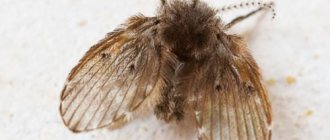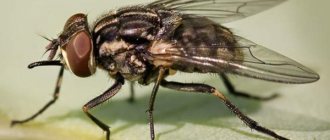Materials
Publication date: 12/05/2019
0
5281
- Weaknesses in frame buildings
- Selecting a grid
- The advantages of this method
- Protection of the house during the construction phase
- Combination of mesh and other protection methods
Frame houses are popular due to the speed of construction and low cost compared to capital construction. However, such buildings also have disadvantages, one of them is the breeding of rodents. It is worth taking care of protection from mice and rats at the construction stage. A metal mesh will help reliably protect your home from rodents. Let's talk about how mice usually get into the house, and how to choose and install a mesh to protect against them
Prevention measures
Mice inhabit a frame house for a number of specific reasons: in search of food and a place protected from drafts and cold. The rather specific design of the “framework,” unfortunately, does not serve as a serious obstacle for such animals.
This happens because when building a frame it is quite difficult to avoid the appearance of holes in the joints of the base of the house, its floor and ceilings. In addition, materials that are easily chewed by mice are widely used for cladding and as insulation. As a form of prevention, experts advise using the following methods to combat unwanted “neighbors”:
- The use of a special rodent mesh for cladding a frame house;
- Floor and basement protection;
- Using the “correct” insulation;
- Strict adherence to frame construction technology.
The most effective ways to protect a frame house from rodents are measures that are used at the initial stage of construction.
Protecting the frame from rodents at the start of construction
So, the most effective ways to protect a wooden cottage from rodents and insects are the following:
- It is better to equip the foundation with reinforced concrete slabs, because they cannot be chewed through;
- Ecowool should be used as insulation. It is 80% cellulose. And a 20% mixture of borax and brownic acid, which provides real protection in the fight against any type of pests;
- Wooden frame elements must be regularly treated with a special mixture of borax and lime;
- To fill interior partitions, you should use slag, ash, wormwood or peppermint. They keep rodents away from their homes with their pungent odor;
- Another means of effective protection is a metal mesh in the form of small cells. It covers all floors, as well as the foundation and walls.
Using these simple methods at the initial stage of building a frame house will prevent rodents from entering the home with a 99% probability.
How to protect a frame residential building from rodents?
It is quite easy to detect mice and rats that have appeared in a house outside the city. Their appearance is indicated by characteristic scraping sounds behind the casing or in a frame-type sandwich, spoiled food and pieces of furniture. As soon as the pests feel relatively safe, they calmly walk around in the basement, garage and rooms on the first floor.
Today there are quite a few ways to combat rodents. However, they should be used with caution. For example, many homeowners, in the old fashioned way, use poison, which can cause even more problems.
Firstly, both domestic animals and small children can try it, which will lead to dire consequences. Secondly, mice do not die immediately, but after some time. If death overtakes a rodent under the floor, in the wall or in the ceilings, the smell of its corpse will freely spread throughout the room. It can be eliminated by completely disassembling both the sheathing and the insulation. Because of this, rats and mice that have settled in the “framework” should be driven away or caught.
Mice and drywall
Often mice settle behind drywall, and getting rid of these residents becomes problematic. The building material is too thin, pliable and it is easy for rodents to chew through it, no matter how carefully the cracks and holes are sealed.
What to do? In houses where gray bandits become frequent guests, either do not use drywall at all, or additionally reinforce it on the outside with a metal mesh with small cells. It is not necessary to cover the entire height of the walls; it will be enough to attach it at a distance of 30-40 cm from the floor. The mesh holes should be minimal - after all, rodents are able to crawl into holes the size of a pencil .
Builders also advise laying various materials that are dangerous or unattractive to mice in the space between the drywall and the main wall:
- Broken glass along the entire perimeter of the wall.
- The glass wool layer is a prickly material and animals do not like to come into contact with it, although home owners claim the opposite.
- Instead of glass wool, you can use ecowool. The fact is that in its composition, in addition to environmental cellulose, there is orthoboric acid. The substance causes severe thirst in rodents, so mice, even if they settle in this heat-insulating material, will eventually retreat anyway, unable to withstand the “drought.”
- Well, the last alternative to laying in drywall is foam glass or expanded clay: according to manufacturers, their animals are not particularly fond of them.
The folk method, which also has a right to exist, is quite simple and unpretentious: during installation work on the construction of the structure, burdock or blackroot seeds are placed in the pier. The “nuts” are not only prickly, but also tenacious - they stick tightly to the animal’s fur, interfering with its movement. As a result, mice either die of hunger or do not penetrate such walls at all.
Instead of poisonous plants, you can add a layer of boronic acid: again, this is added during the repair process, because after that it will be difficult to do so.
If the pests do settle down behind the drywall, they work according to the scheme described above: they lure them out, destroy them, and close up the holes.
How to forget about rodents in a frame house?
When the construction of a frame house has already been completed, but during its construction there were violations in technology or no attention was paid to ways to protect the home from the appearance of rodents, the risk of a threat in the future from unwanted neighbors increases greatly. You should start mouse control immediately after detecting the first signs of rodents.
Within the walls
To prevent pests from infesting the walls of a frame house, it is necessary to use profiled stainless steel sheets as its cladding. The average thickness of this material is 1.5 mm.
Rodents are simply not able to chew through metal, and its surface is too slippery for them, which completely eliminates the possibility of unwanted guests appearing in the wall “pie”. Another good option is to use a metal mesh.
In insulation
To reliably protect a frame dwelling from the ubiquitous rodents, experts in their elimination advise using wisely and knowledgeably selected insulation. Many private developers, in an attempt to save money, use insulation in the form of cheap polystyrene foam. And he is completely unable to resist mice that freely penetrate into residential premises.
The insulation used in a frame house must contain additives that prevent nesting of rodents
A more reliable and “long-lasting” insulating agent is ecowool. It effectively fights rodents and also creates an antiseptic environment that prevents the formation of mold and mildew.
In the basement
It is the basement and underground space that are the main route of entry for rodents today. For this reason, homeowners are required to take great care in protecting their floors and crawl spaces from pests. The simplest and most humane way to fight is to install ultrasonic repellers. To achieve the desired effect, it is recommended to purchase several devices at once and place them in the corners of the building.
As an option, you can use mousetraps - classic, mechanical, or more modern electronic models. Or glue traps. Once trapped, rodents will no longer be able to get out.
Grid as a very popular method
To protect against rodents, a mesh with a cell diameter of no more than 6-6 mm is used.
To prevent mice and rats from getting into a frame house, special meshes are used, made of metal and having a mesh size of no more than 6 mm. This size is due to an interesting fact - the skull of rodents is easily flattened to a minimum size.
Material
In the form of effective, reliable and durable protection of the “framework” from rodents, leading experts advise using exclusively metal welded mesh. But exactly the one that contains galvanized steel. Today there are plastic mesh options on the market. But in practice, rodents cope with this material very quickly.
Cell size
The diameter of the metal mesh bar is 0.6 mm, the mesh size is 6 * 6 mm, the mesh width is 1 m, and the length is 15 m. A diamond-shaped mesh steel mesh 10 * 10 mm can only stop large rats and serve as a reliable barrier against mice. is not capable, especially when it comes to young animals. In addition, you should not use woven mesh with movable joints. Mice simply push the cells apart and find themselves inside without any hindrance and feel at home.
Installation
A metal mesh, which can protect against rodents, is laid after laying the foundation, along the perimeter of the entire cottage, under the floor, and also with the edges placed on the walls from the outside. During the installation of protection, it is necessary to remember that rodents can go deep into the ground up to 50-60 centimeters, thus penetrating inside through the cracks and holes of the base and foundation.
Installation work consists of the following stages:
- A metal curtain is attached along the base and base of the house, to a depth of at least 1 m;
- The mesh is laid in an overlapping manner on the subfloor in front of the insulation layer;
- Before finishing the façade of the external walls, all corners of the building are covered with mesh;
- It must also close all ventilation gaps, vents and chimneys.
Nails or screws are used as fastening.
Price
The cost of galvanized fine mesh is quite affordable for the average Russian. The average price tag ranges from 70 to 160 rubles per square meter. More expensive options for woven protection with a rod thickness of up to 1.2 millimeters can cost 200-250 rubles per square meter; if necessary, it can stop not only mice, but also large rodents.
Reviews from home owners
On specialized construction forums there are different opinions and reviews about reliable methods of combating the ubiquitous rodents.
- “To prevent the appearance of mouse families and in the process of reconstructing a frame house, we decided to perform simple actions. After dismantling the floor, a layer of expanded clay was laid between the rough and finishing coatings. It plays the role of a reliable barrier against pests. All corners of the building were covered with fine mesh. More than three years have passed since the renovation was completed, and I haven’t seen a single mouse in the house after that.”
- “To fight mice, we decided to use old-fashioned methods. As they say, the simpler the better. Instead of a mousetrap, they took ordinary beer bottles with a narrow neck. Unrefined oil was poured into such a container. Then they placed the bottles in places where pests were found. But not straight, but at an angle of 30-40 degrees. A thick rope or wire is attached to the neck of the bottle. This is the only way the mouse can get in. Within a week, 7 mice got caught in our homemade mousetrap.”
- “In my opinion, the most effective way to combat rodents is to use special ultrasonic repellers. I bought three devices at once for 700 rubles each. I placed them in the corners of the house. For 40 days, maybe more, not a single mouse is visible.”
How to protect a frame house from insects?
A variety of insects are considered an equally pressing problem for residents of frame houses. These include ants, wood-boring beetles, termites and other pests that can cause irreparable damage to wood and natural fiber insulation. The most reliable methods of control are the use of impregnations with a special composition:
- Antiseptics such as "Biotex" or "Pinotex". They contain biocides that can penetrate the wood, creating a protective layer that pests cannot overcome.
- Translucent paint and varnish compositions. The most famous brand specializing in the production of wood protective compounds is Tikkurilla.
Any protective compounds can weather and be washed away by rain. Because of this, treatment of the frame and insulation against pests should be carried out regularly.
Preventive measures
Preventive measures have been discussed more than once. The main principle is this: there are no pests in a clean house.
Therefore, adhere to simple rules:
- They constantly carry out general cleaning, during which they find and throw away all found garbage that is not of household or other interest;
- do not leave scraps on the table, under the table, but promptly put them in a trash can with a lid;
- do not clutter the house and apartment with unnecessary things;
- all products are kept out of reach in tightly sealed containers;
- They periodically inspect the residential area, seal up any mouse holes found, having previously prepared an unpleasant surprise for the rodent using poison or a mousetrap.
How to get rid of insects in a frame house?
When the wooden frame of a building is already infested with insects, the following methods of combating them can be used:
- Chemical;
- Biological;
- Mechanical;
- Ultrasonic and electromagnetic radiation.
If you cannot get rid of insects on your own, experts advise contacting specialized pest control services. The main thing here is to start fighting as early as possible, before they have time to multiply to unimaginable limits and cause irreparable damage to the main structural elements of the frame house.
Fighting mice with repellers?
Humanity continues to come up with new options for how to get rid of mice in a country house. The result of this work was the emergence of ultrasonic electronic repellers that use frequencies that cause attacks of anxiety and fear in rodents. As a result of the operation of the device, the mice leave the room.
Repellers have proven themselves effectively in apartments, houses, agricultural, warehouse and other buildings.
Also, these repellers are effectively used to repel insects; you just need to set a certain frequency.











